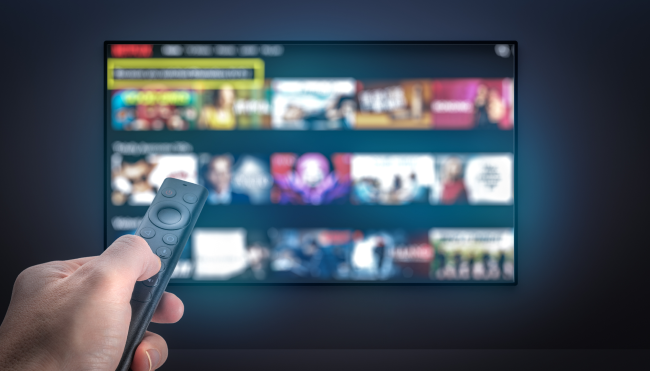- Why Amagi
-
Solutions
Contact UsBusinessWho We Serve
- Offerings
- AI
-
Resources
Contact UsINDUSTRY REPORTSAmagi FAST Report #15: The Power of Live Programming: A Catalyst for Streaming SuccessAugust 21, 2025Read More
-
Company
Contact UsNewsroomAmagi launches AI-powered Smart Scheduler to improve content programmingApril 3, 2025Read More
Blog
Q&A: The future of sports streaming and premium rights
By Rachel Marcus - November 19, 2025
In a conversation with Joe Nilsson, CEO & Co-Founder of C15 Studio, at our annual LA FAST Conference this fall, we discussed the future of sports viewership. From redefining FAST to serving global audiences who crave flexible, high-quality sports content, Joe shared insights on how streaming and traditional TV are converging — and what that means for rights holders, advertisers, and fans alike.
Amagi: Describe the opportunity you saw for rights holders in the streaming and FAST space:
Joe Nilsson: Having done FAST channels for quite some time, general entertainment is well catered for — it’s competitive, if not saturated. Back in 2022 or 2023, much of the market believed sports was under-catered for. What we saw was that a lot of the large sports players weren’t engaging — either through lack of knowledge or because they viewed it as a secondary opportunity. While sports represents the largest opportunity for a platform, especially in terms of advertising spend, we saw a unique opening to help rights holders create their own channels. It’s not a small undertaking, and many rights holders don’t want to do it in-house. So we aim to be the best partner for those premium rights holders.
Amagi: What’s changed in live sports viewing habits recently?
Nilsson: For the longest time, FAST has never been by-appointment viewing; it came from binge-watching culture. But that’s changing. Live sports presents a new opportunity to acquire audiences FAST never really had before. Live content drives high viewership, but many sports fans can’t always watch live due to time or other commitments. Having replays is almost as valuable — people can watch on their own schedule.
READ: Why going live could be your platform's best move yet
Amagi: How do replays fit into the viewer experience?
Nilsson: For instance, as a big F1 fan, I can’t always carve out the hours to watch all the live coverage. The ability to catch replays at a time that fits my work and family schedule means there’s still strong viewership for non-live content. That’s especially true across time zones — our US and European audiences engage differently, but both find value. Our DP World Tour channel, for example, airs live golf early in the US morning. Many viewers call it their “coffee golf” — it doesn’t compete with the PGA and fits perfectly into their mornings.
Amagi: How do you see rights holders adapting to changing viewing habits?
Nilsson: Our strongest performance often comes when we’re not competing with major domestic sports noise. We’ve also seen the lines blur between FAST and streaming — it’s all just TV now. Viewers don’t care about the acronym; they just want quality content. So we think less in terms of “FAST channels” and more in terms of “streaming TV channels.” Audiences call it TV, and rights holders are now treating it more seriously — not as an afterthought but as a core part of their distribution mix.
READ: How FAST channels are evolving to support SVOD and live linear streaming services
Amagi: How do you see FAST as part of the larger content strategy for rights holders?
Nilsson: It’s about reaching audiences outside paywalls and driving new viewers into paid windows. Some companies treat FAST as a top-of-funnel strategy — a way to draw fans toward premium or subscription experiences. Others use it to expand their overall footprint. Rights holders are realizing that being on free, ad-supported platforms grows their brand and attracts sponsors who value broad reach.
Amagi: How do you deliver value to rights holders?
Nilsson: Holistically, the way we describe FAST’s value to rights holders is that it’s top of funnel. It reaches casual or fringe fans — the ones who won’t pay for direct-to-consumer subscriptions like F1 TV — and introduces them to the brand. The scale of FAST audiences can exceed what direct-to-consumer channels can reach, and that’s where major sponsorship value lies.
Amagi: What’s the future of sports streaming look like?
Nilsson: We’re not far from a world where ad revenue and audience size make free streaming a real alternative to pay TV — at least for some rights holders. For others, that concept might still be unthinkable, but as sponsors chase larger, barrier-free audiences, sports with open access can grow bigger, long-term fan bases.
Want to learn more?
Related Blogs
Get Started
Increase revenue and reach with our Broadcast & Streaming solutions.
Cloud modernization. Streaming unification. Monetization. Marketplace.
 German
German French
French Spanish
Spanish Korean
Korean Japanese
Japanese Portuguese
Portuguese


